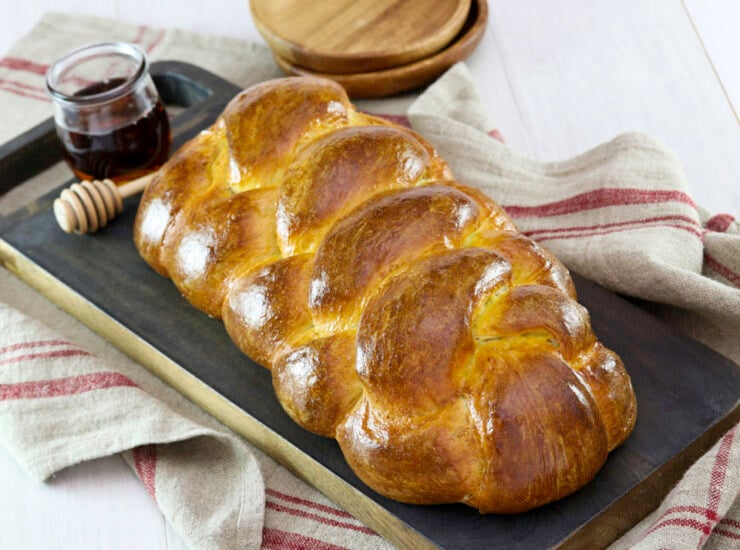
Presenting sourdough challah – two of the most beloved breads combined in one beautiful braided loaf. A perfect sourdough challah is rich, fluffy, eggy, and crusty, with a slight tang.
Making and braiding sourdough challah bread requires time patience, but it is definitely worth the wait! The flavor is more mild than what you might expect from traditional sourdough. It’s a balance struck between texture, richness, and tang.
Making sourdough challah is a satisfying and meditative process. I find it therapeutic. I hope you will, too!
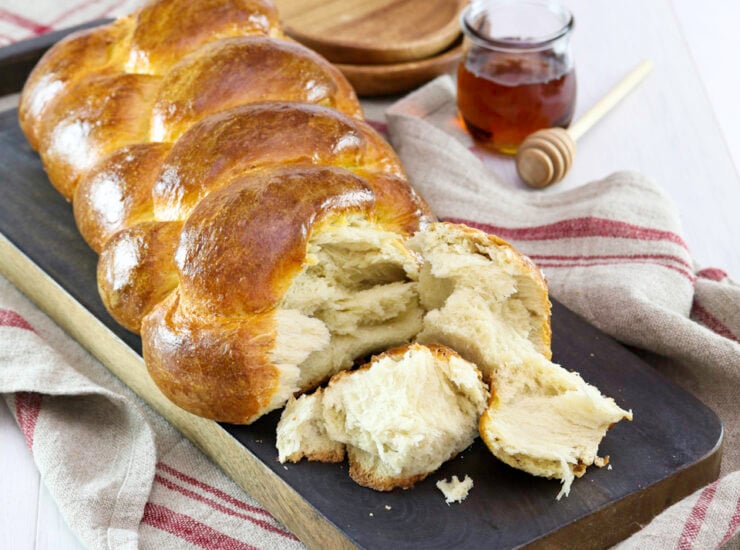
Table of contents
What is Sourdough Challah?
Challah is an ancient traditional Jewish bread. Sourdough is the original form of leavening. Combine the two, and you have sourdough challah!
Before the development of commercial yeasts, all risen bread could be considered sourdough. Sourdough is made from naturally occurring yeasts, and has a much slower rise than breads made with commercial yeast.
I’ve been wanting to develop a sourdough challah recipe for years. I’ve always loved making homemade bread. In fact, on my site you can find some of the internet’s most popular challah recipes, from traditional challah to an apple honey version for the Jewish holidays, and even one made with pumpkin.
But it took me some time to develop a sourdough challah recipe that I truly love. I’m very excited to share this version with you.
Ingredients and Notes
For anyone who loves baking, sourdough is a labor of love. It also happens to be my weakness. Growing up in California, we were often blessed to have a quality loaf of sourdough in the home.
It’s safe to say I am addicted to the tang of a good quality sourdough. Combining that concept with challah, our weekly bread-making tradition, seemed like a natural next step. This recipe only requires a few simple ingredients!
- Sourdough Starter – for this recipe you will need a reliable, well-fed sourdough starter. You can find a method for making your own starter here, and I have included more tips below.
- Honey – this adds a subtle sweetness to the bread, and provides natural sugars for the starter to feed on.
- Whole Eggs and Yolks – Challah is an eggy bread, and adding whole eggs as well as egg yolks makes the texture of this dough utterly rich and delicious.
- Bread Flour – I use bread flour for this particular recipe because I find it gives me the best texture.
- Kosher Salt – I typically use a fine grey Celtic salt in my cooking, but in this recipe I’ve used kosher salt. That’s because it has a milder flavor than some other salts. I wanted the tanginess of the sourdough to lead here, and kosher salt helped me to achieve the exact mild tang I was looking for.
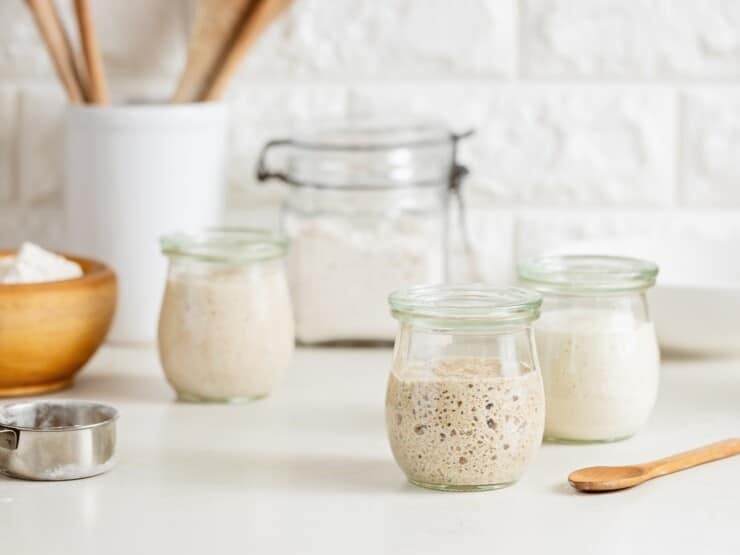
Making a Sourdough Starter
This sourdough challah features the fluffy, eggy texture we love about challah. But instead of using commercial yeast to help the bread rise, we use a sourdough starter made of cultured wild yeast and lactobacilli.
This type of starter is easy to create in your kitchen, though it does take time and a little patience. Making a starter involves fermentation, which takes time.
Feel free to use any sourdough starter you prefer. There are several ways to approach the process. For those new to sourdough, you might want to try this technique, which produces a reliable starter in most climates.
Or check out this great tutorial!
Note: You need a happy, healthy, active starter for this recipe. That means a starter that will triple in size after a good feeding. A sluggish starter will yield a dense bread. To boost a sluggish starter, you can feed a tablespoon or two of whole wheat or rye flour in place of the same amount of regular flour when feeding. Wheat or rye flour have more natural yeast spores, so they tend to give a sluggish starter a boost.
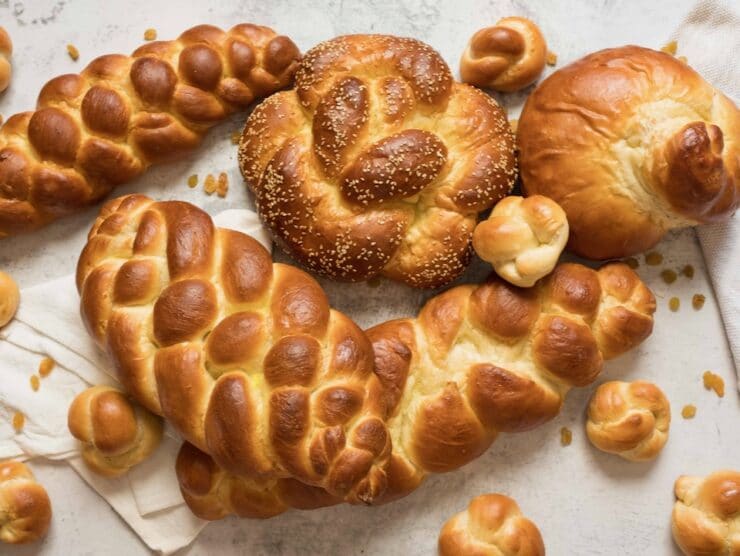
Braiding the Sourdough Challah Dough
If you’ve never made a challah braid before, this recipe will give you the opportunity to try out the process! There are many different ways to braid challah, from three-strand to four-strand braids, and even round braids for special holidays!
I’ve got an entire post dedicated to braiding challah, which outlines the various ways to braid this delicious bread. Check out my post How to Braid Challah for all the tips and techniques.
It even includes a video to walk you through the process!
My Favorite Ways to Serve Sourdough Challah
For Shabbat, challah and cholent are natural companions! Serve it alongside matzo ball soup or hearty mushroom barley soup for a lighter meal.
It can accompany any braised chicken dish – use it to sop up the cooking juices. Or, serve it with shakshuka and use it to mop up the sauce.
And, if you’ve got leftovers, I’ve got an amazing recipe for challah French toast!
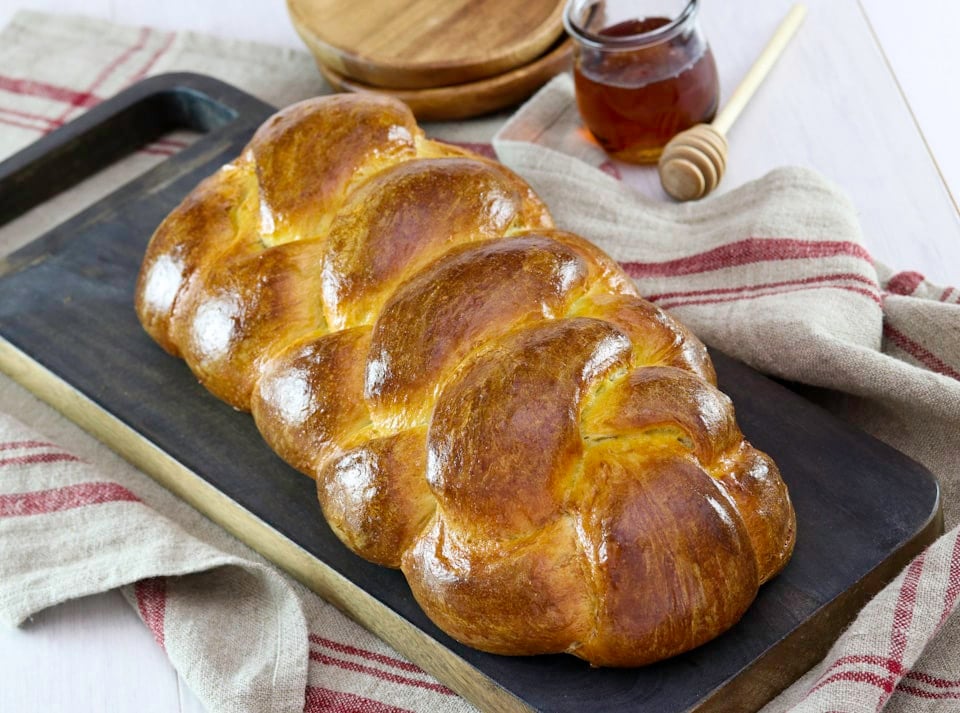
Sourdough Challah
Ingredients
- 1 cup bubbling sourdough starter at 100% hydration, fed 8-12 hours prior
- 1 cup warm water
- 1/3 cup honey
- 2 eggs, divided
- 3 egg yolks
- 2 tablespoons oil (any mild flavored baking oil will work here – I like using avocado oil)
- 4 1/2 – 5 1/2 cups bread flour, divided
- 2 teaspoons kosher salt
Instructions
- In a large bowl, or in the work bowl of a stand mixer, combine starter, water, and honey. Gently whisk together until starter is well combined with water. Add 1 egg, 3 egg yolks, and 2 tablespoons oil. Mix to combine.

- Add 2 cups flour and stir with a wooden spoon, or mix with dough hook until smooth.

- Cover and let stand for 30-60 minutes, or until mixture starts to have large bubbles forming on the top. Just a few bubbles is fine, and they should be popping gently.

- Add 2 ½ cups additional flour and 2 teaspoons kosher salt. Stir with a wooden spoon, if mixing by hand – dough should come together in a slightly sticky, smooth and firm texture. If using a mixer, mix with the dough hook on low speed. Watch the hydration, adding enough additional flour so the dough forms a smooth, firm ball around the hook and does not cling to the sides or bottom of the bowl. It may be a little sticky to the touch, but it should be firm. Turn the dough out onto a lightly floured work surface and knead 5-10 times, adding additional flour if needed if the dough feels too sticky, then form into a smooth ball.

- Transfer dough into a large bowl that is clean and lightly oiled. Cover the bowl with a damp cloth, and let rise at room temperature for 2 hours. The dough may not rise much, and that is ok.

- After two hours lightly flour a work surface and turn out the dough. With an open hand gently de-gas the dough by pressing it into a flat disk. Make sure all large air bubbles are broken.

- Divide and braid the dough as desired. Braiding instructions can be found here.

- Transfer the bread to a parchment lined prepared baking sheet. Cover the dough with a damp cloth and let rise at room temperature for 3 ½-5 hours,or until the dough is tripled in bulk and a finger gently pressed into the side of the dough leaves an indentation that does not spring back. It will jiggle slightly when the pan is moved.

- Heat the oven to 400⁰F. Beat the remaining egg with a 1/2 tsp water, and brush a thin layer of egg wash over the dough, taking care to brush the seams and sides of the braid. Place the challah into the oven and immediately lower the temperature to 350⁰F. Bake for 20 minutes.

- Remove from the oven and brush the bread with the reserved egg wash, taking care to brush any areas where the bread has expanded in the oven.

- Rotate the pan and return to the oven for 20-25 minutes more, or until the bread is deep golden brown and sounds hollow when gently tapped on the bottom. If the bread is browning faster than it bakes, cover with a layer of foil to stop the browning, and continue baking until cooked through.

- Cool on the pan for 20 minutes, then carefully transfer the challah to a wire rack to cool to room temperature.

NOTES
Nutrition

tried this recipe?
Let us know in the comments!
If you enjoyed this recipe, I’d love it if you left me a star rating and comment below. Also, don’t forget to share and tag us on Facebook and Instagram!
FAQs
Challah is a traditional braided bread with an eggy, rich texture, similar to brioche. Historically it is a Jewish traditional bread used to commemorate special holidays and ceremonies. However nowadays, everybody can enjoy challah!
Sourdough uses fermented starter to create a rise in the dough. The fermentation process used for the starter improves digestibility and can actually increase nutrient absorption. Sourdough also has a lower glycemic index than yeast-risen bread, which means it doesn’t spike blood sugar as much.
This particular recipe was developed as a sourdough. For a yeast-risen option, check out my traditional challah recipe.
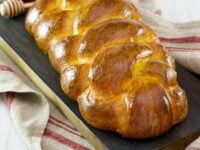
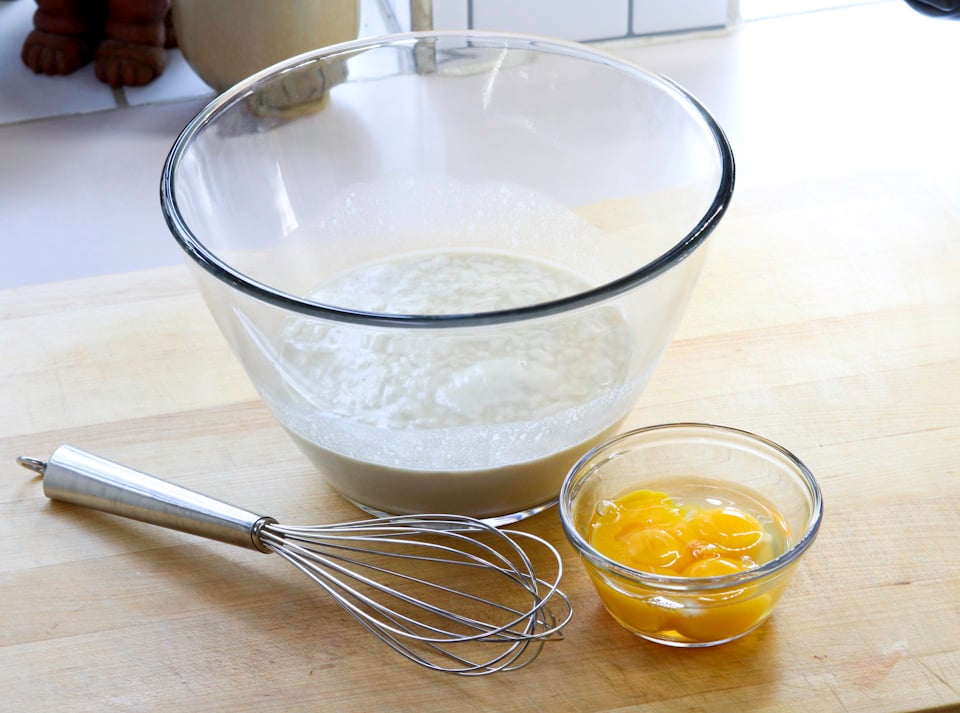
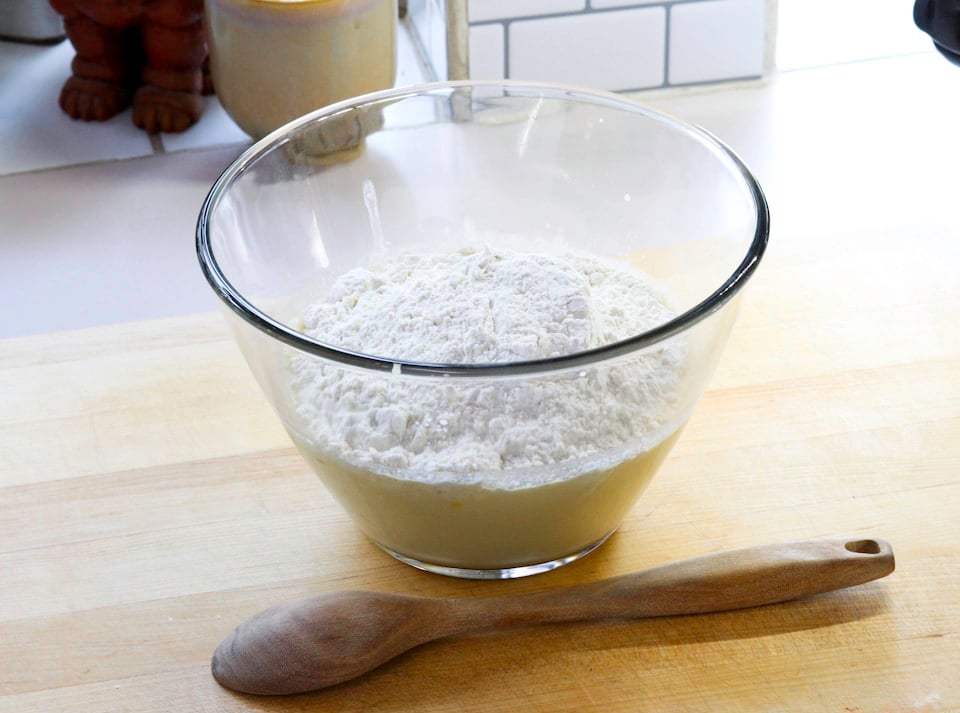
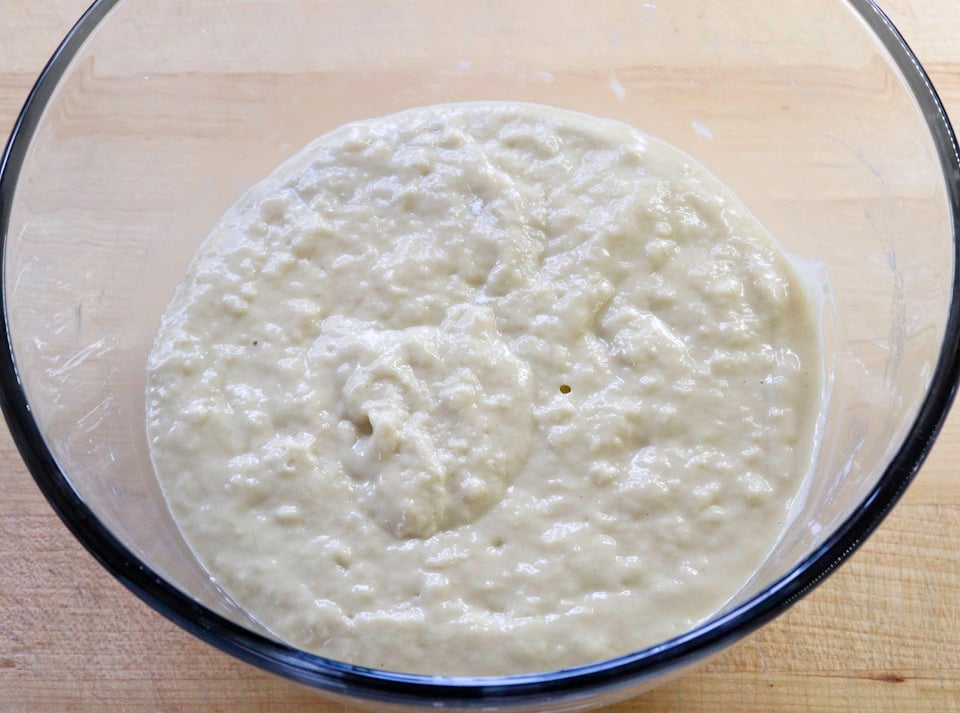
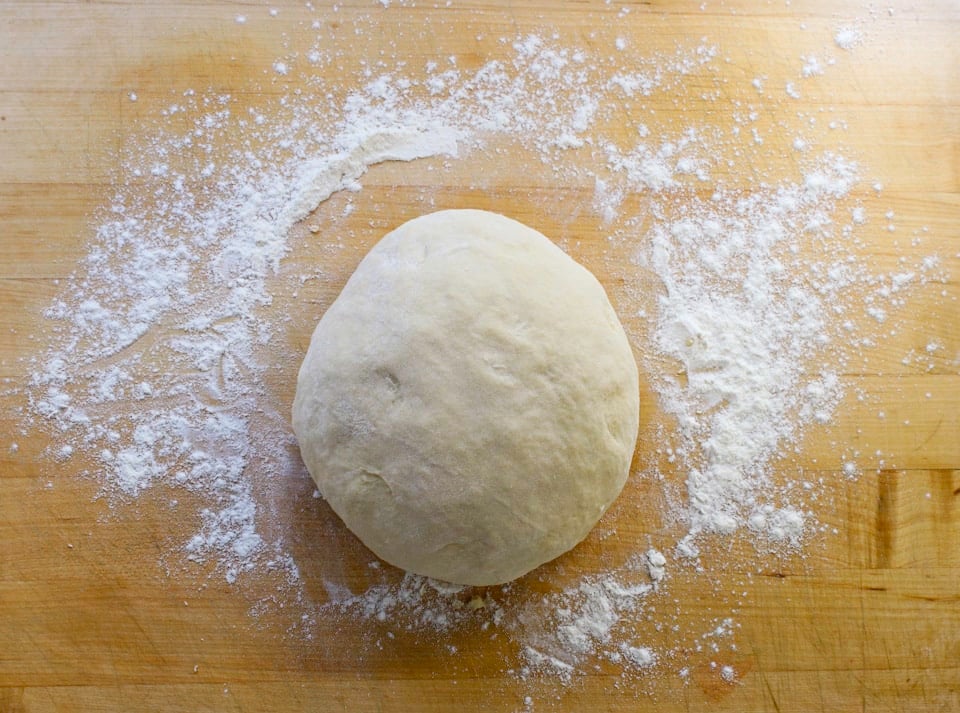
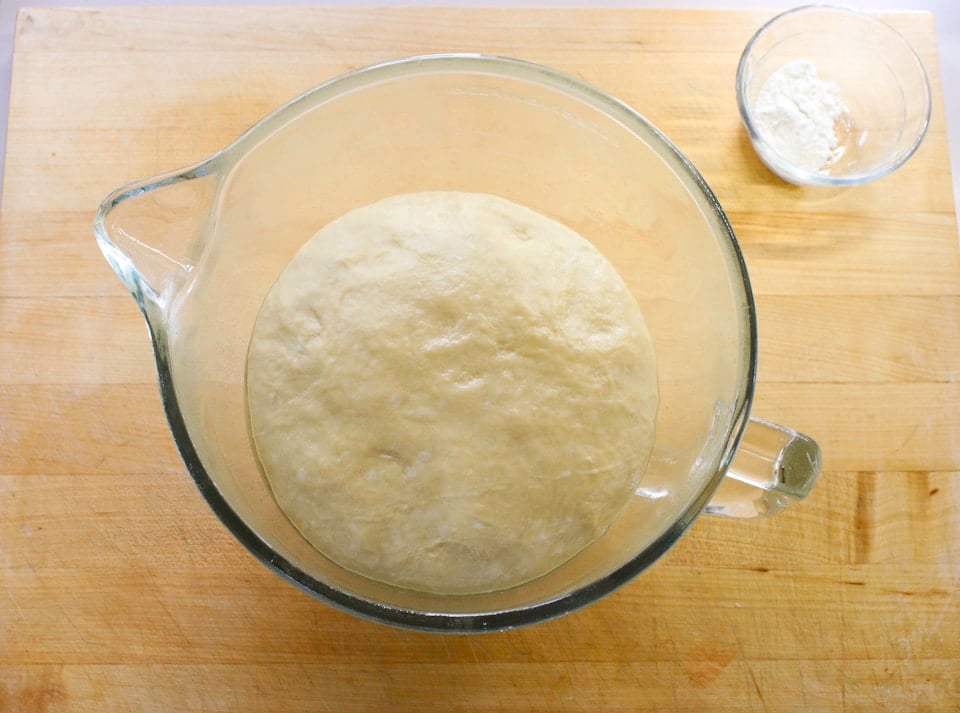
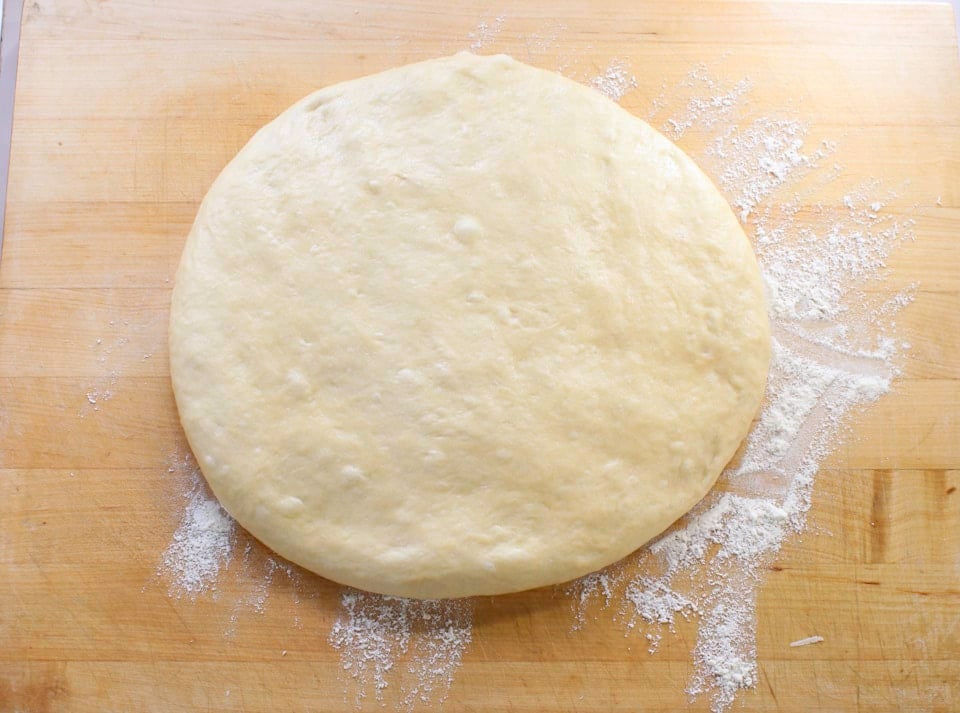
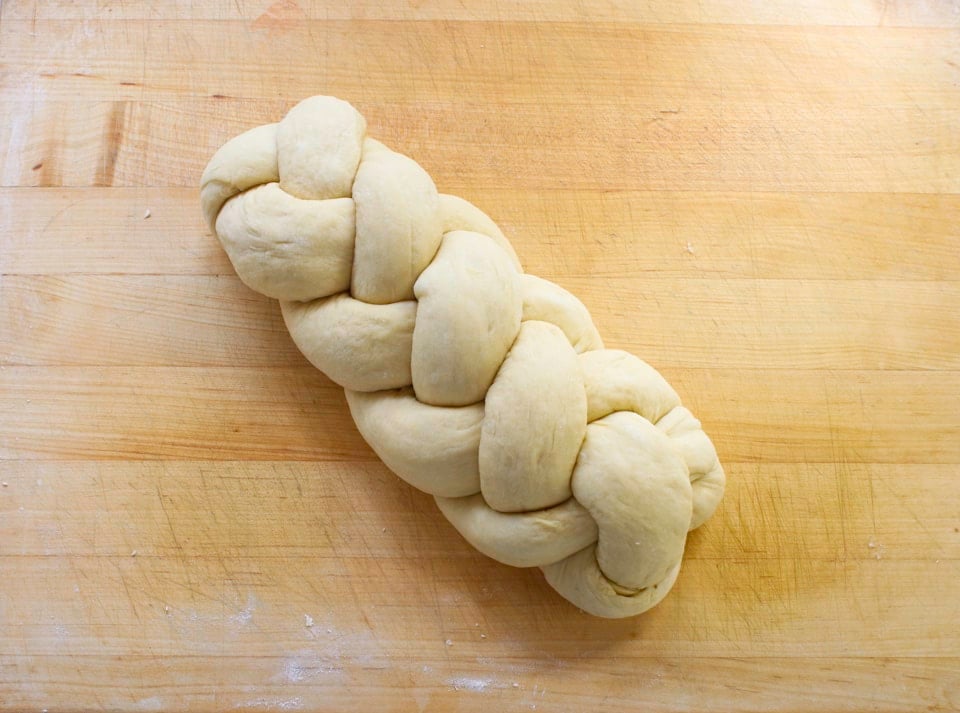
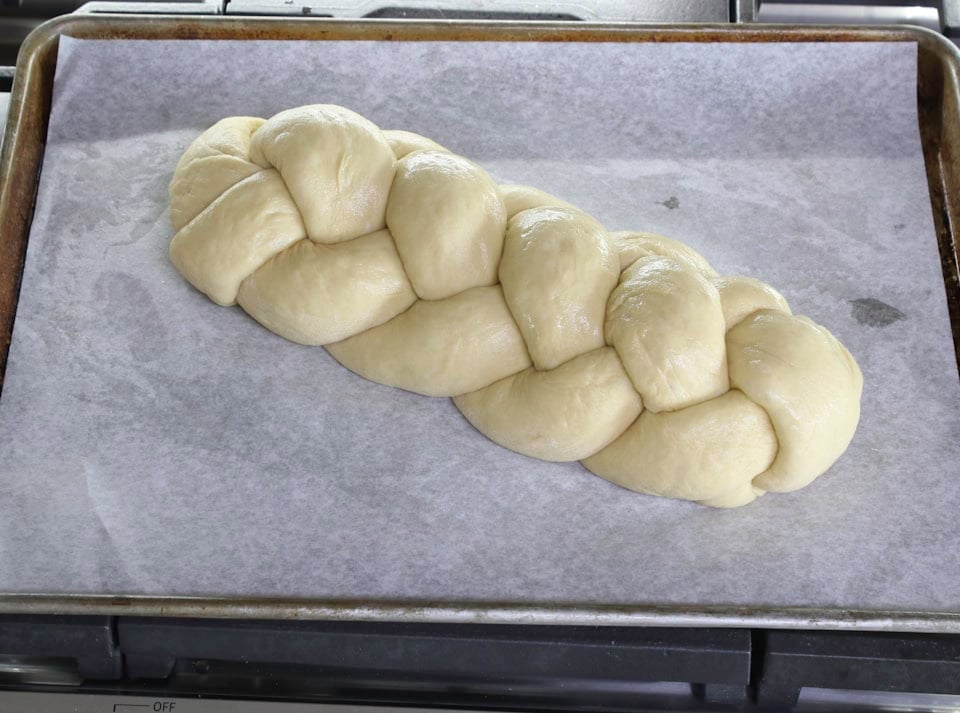
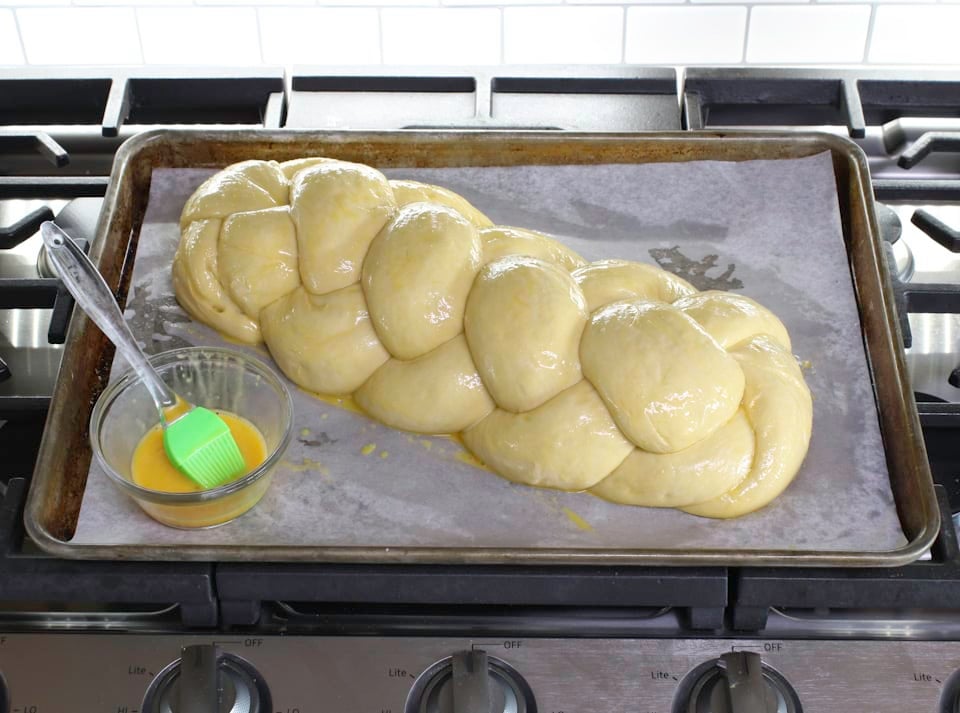
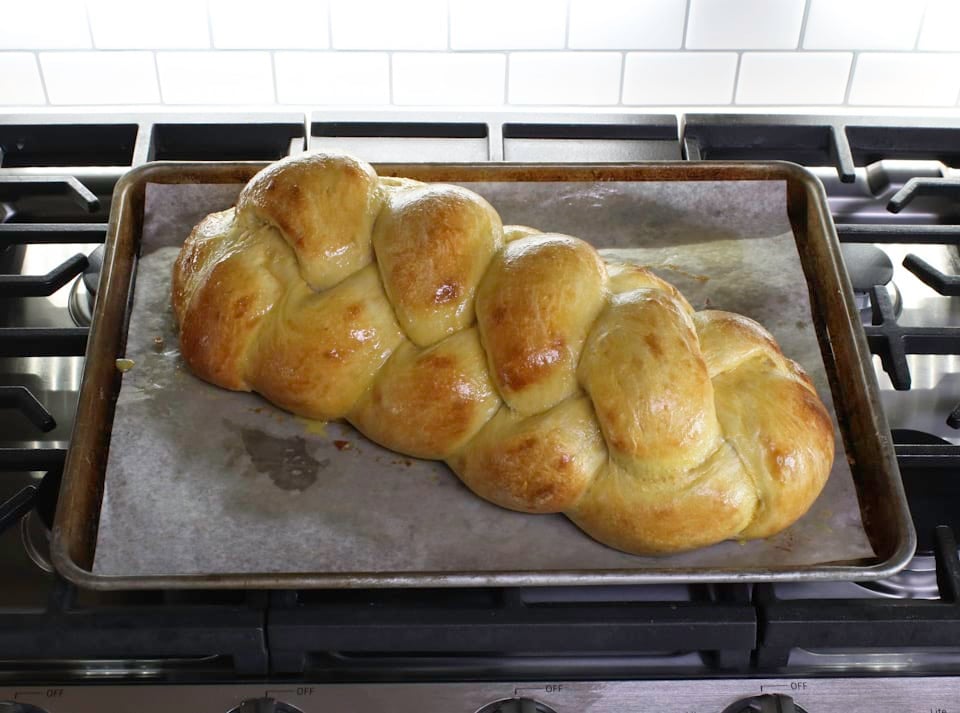
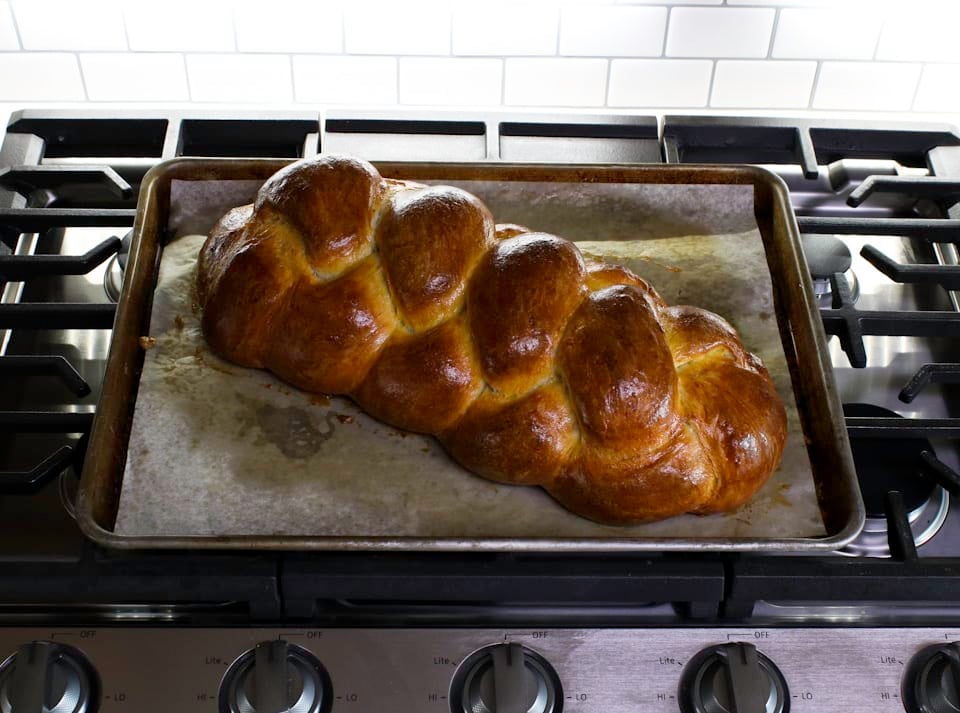
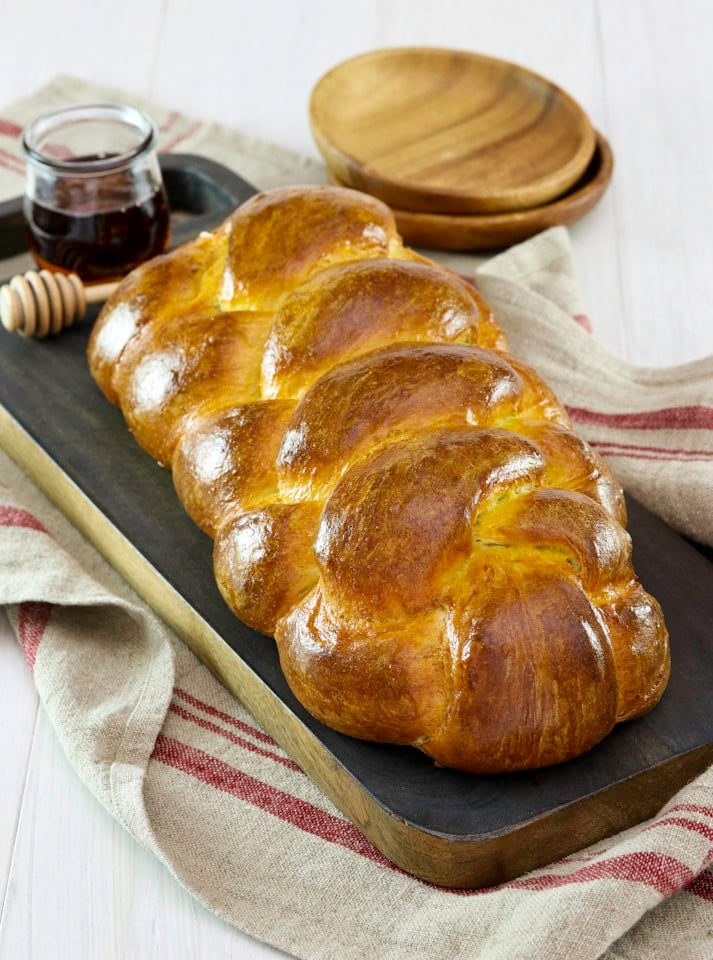


I tried this recipe. It tasted good, but rather than rising it spread. If I make it again I would add real yeast to goose it.
Interesting Rachel, and you’re sure the starter was healthy? I didn’t experience that during testing, but adding a little yeast shouldn’t hurt.